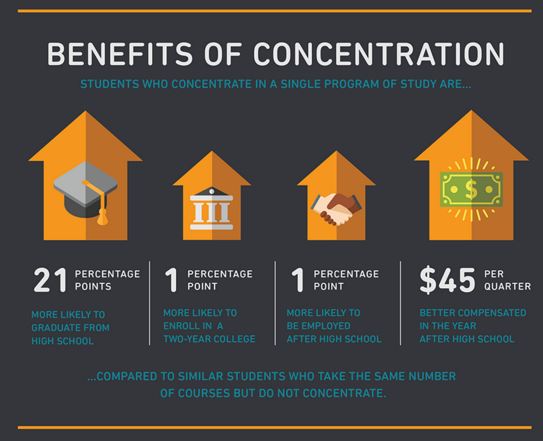Three Approaches to Connecting CTE Programs and Registered Apprenticeships
Work-based learning, an educational strategy that provides students with technical skills and knowledge in an authentic work setting, is often delivered through a Career Technical Education (CTE) or Registered Apprenticeship (RA) program. Both have overlapping structures and content, including experiential learning and career exploration coursework, which has led many states to build more deliberate linkages between the two. Earlier this summer, the National Center for Innovation in CTE released a report profiling six states — North Carolina, Connecticut, Florida, Kentucky, Washington and Rhode Island — that are working to align secondary CTE and RA programs. The report identifies three approaches that these states have taken:
- Registered Apprenticeship: High school students participate directly in an apprenticeship, applying CTE coursework to the RA requirements and applying RA work experience towards a high school diploma.
- Pre-apprenticeships: High school students participate in programs that prepare them for an apprenticeship, often applying credit towards RA program requirements. Participation on a pre-apprenticeship often allows the student to get preferred entry into an RA program.
- Registered CTE Curriculum: Students earn credits toward RA completion by enrolling in and completing CTE coursework aligned to RA programs in high-demand industries.
No matter the approach, states frequently face the same challenges with aligning CTE and RA programs, including lack of resources, misperceptions about pre-apprenticeship and RA programs, and difficulty engaging employers. The report further describes strategies that these states have taken to address these challenges.
A Customer Service Approach to Career Advisement
On a related note, the U.S. Chamber of Commerce Foundation recently released the third installment in its youth employment series, outlining the role that the employer community can play in building career knowledge and competency through career advisement. The brief encourages employers not to reinvent the wheel, but rather to adapt their existing business practices to support career advisement through a “customer service†approach. Key activities through this approach would include: representing the business community within schools, serving as subject matter experts, matching students with employers, validating skills acquired during work-based learning experiences, and organizing talent sourcing networks. By playing a larger role in career advisement, employers can do well by doing good: helping students gain clarity about their career choices while simultaneously strengthening the talent pipeline.
Odds and Ends
Executive Advice: Noting the limited discussion of education issues this election cycle, Bellwether Education Partners took it upon themselves to publish 16 education policy ideas for the next president to consider. Among the recommendations? Connecting secondary CTE to postsecondary opportunity by integrating academic, socio-emotional and technical learning; creating pools of federal grants to launch new models of youth preparation; expanding allowable uses of federal aid; and accelerating investments in technology to support personalized career pathways. Read more here.
Career Readiness: Last month, ACT released its 2016 report on the condition of college and career readiness. The report finds that at least 68 percent of test takers are making progress towards career readiness, a new indicator based on the ACT’s National Career Readiness Certificate. A record 64 percent of U.S. high school graduates took the test this year.
A World-class Education: After conducting an 18-month study of international education systems, the National Conference of State Legislatures released a report that identifies “a highly effective, intellectually rigorous system of career and technical education†as one of four elements of a world-class education system.
CTE Dual Enrollment: In a new blog post, the Education Commission of the States updated its policy components for dual enrollment to reflect opportunities for CTE. While the framework is still in draft form, it provides guidance related to access, finance and quality of CTE dual enrollment.
Americans Prefer CTE: “By a broad 68 percent to 21 percent, Americans say having their local public schools focus more on career-technical or skills-based classes is better than focusing on more honors or advanced academic classes.†That’s according to PDK’s 2016 poll of attitudes toward public education, which was released earlier this month.
Free College: Hillary Clinton’s free college plan, which aims to eliminate tuition for in-state students whose families make less than $125,000, has been getting a lot of buzz this election cycle. New research from the Georgetown Center on Education and the Workforce projects a 9 to 22 percent increase in enrollment at public 2- and 4-year colleges and universities if her plan is seen to fruition.
Remedial Coursework: The National Center for Education Statistics conducted a descriptive analysis of students taking remedial coursework at public 2- and 4-year institutions. The report finds that students who completed remedial courses saw positive postsecondary outcomes (including persistence, transfer to a 4-year institution, credit completion and credential attainment) compared to students who partially completed or did not complete a remedial course. It is also worth noting that students in the sample who attended 2-year institutions took remedial courses at much higher rates (68 percent) than students at 4-year institutions (40 percent).
Austin Estes, Policy Associate
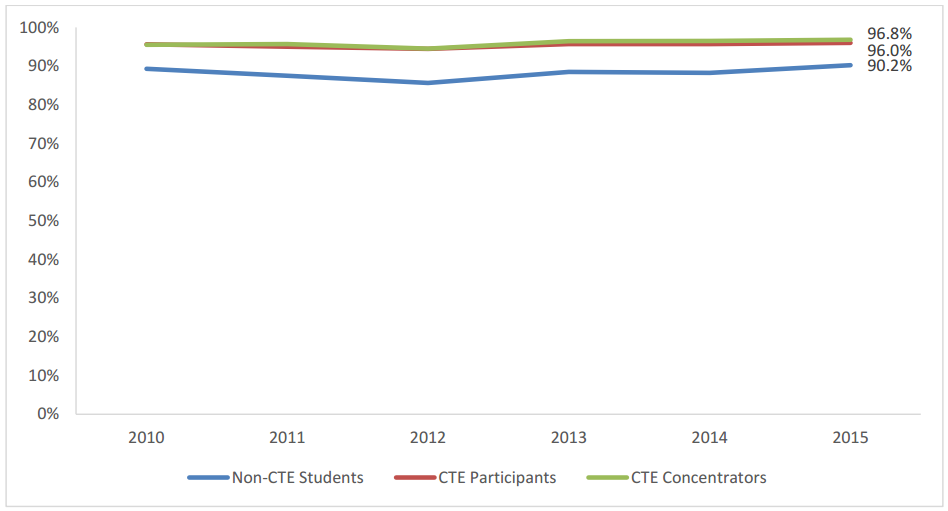 The Public Policy Forum, a research organization based out of Milwaukee, recently published a report examining the CTE system in both Wisconsin and the local Milwaukee region. The study draws upon Wisconsin’s CTE Enrollment Reporting System (CTEERS) and district-level surveys of CTE graduates and finds that two-thirds of students in Wisconsin enroll in CTE courses. The most popular area of focus for these students was Business & Information Technology. The study also revealed positive outcomes for CTE students, including:
The Public Policy Forum, a research organization based out of Milwaukee, recently published a report examining the CTE system in both Wisconsin and the local Milwaukee region. The study draws upon Wisconsin’s CTE Enrollment Reporting System (CTEERS) and district-level surveys of CTE graduates and finds that two-thirds of students in Wisconsin enroll in CTE courses. The most popular area of focus for these students was Business & Information Technology. The study also revealed positive outcomes for CTE students, including: The study finds that, within the population of students that did not go on to a four-year degree, CTE students were 11 percent more likely to “achieve” than non-CTE students. According to the study, “achievement” is measured as persistence in apprenticeship programs, persistence in community and technical colleges, employment and certificate attainment. Additionally, CTE programs accommodated a higher proportion of students receiving free and reduced price lunch and students with disabilities than other non-CTE programs, indicating that CTE could be a strategy for students of all socioeconomic backgrounds and abilities to acquire the skills needed for high-demand, high-wage careers.
The study finds that, within the population of students that did not go on to a four-year degree, CTE students were 11 percent more likely to “achieve” than non-CTE students. According to the study, “achievement” is measured as persistence in apprenticeship programs, persistence in community and technical colleges, employment and certificate attainment. Additionally, CTE programs accommodated a higher proportion of students receiving free and reduced price lunch and students with disabilities than other non-CTE programs, indicating that CTE could be a strategy for students of all socioeconomic backgrounds and abilities to acquire the skills needed for high-demand, high-wage careers. 

 Contributing to a growing body of research on the economic benefit of industry credentials, the Public Policy Institute of California last month released a
Contributing to a growing body of research on the economic benefit of industry credentials, the Public Policy Institute of California last month released a 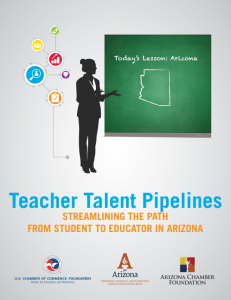

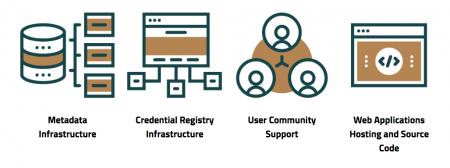
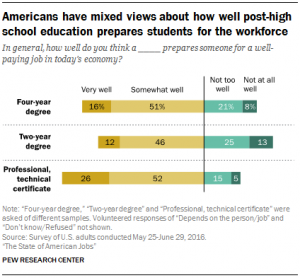


 Probably the most fun part of the event was the afternoon dedicated to visiting WBL in action at programs throughout Baltimore. I had the chance to visit
Probably the most fun part of the event was the afternoon dedicated to visiting WBL in action at programs throughout Baltimore. I had the chance to visit  College is often considered a safe bet, but
College is often considered a safe bet, but  The report precedes an
The report precedes an 